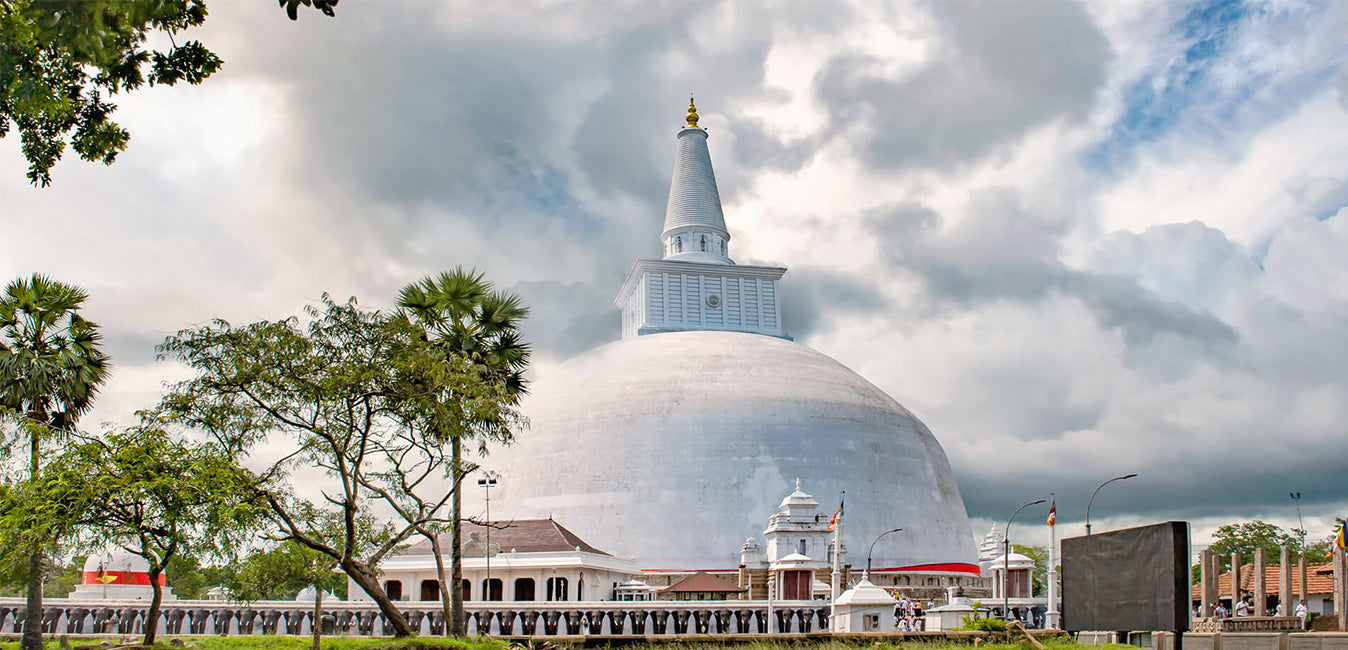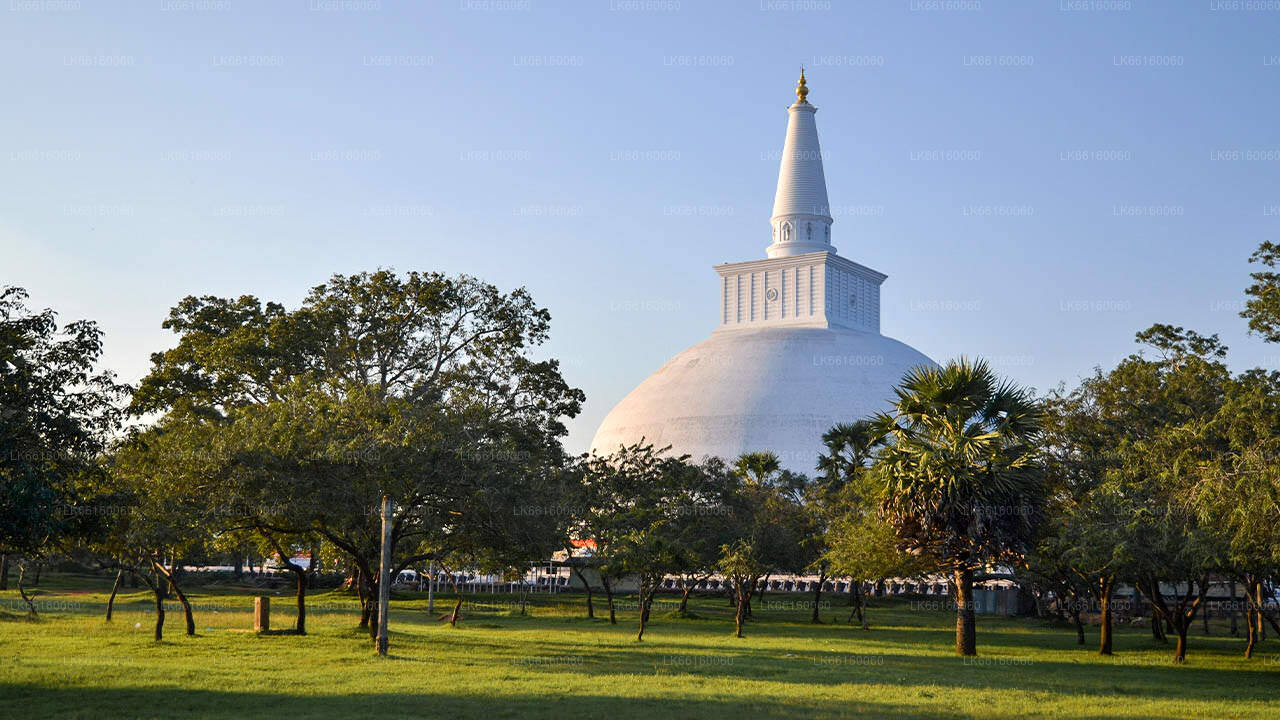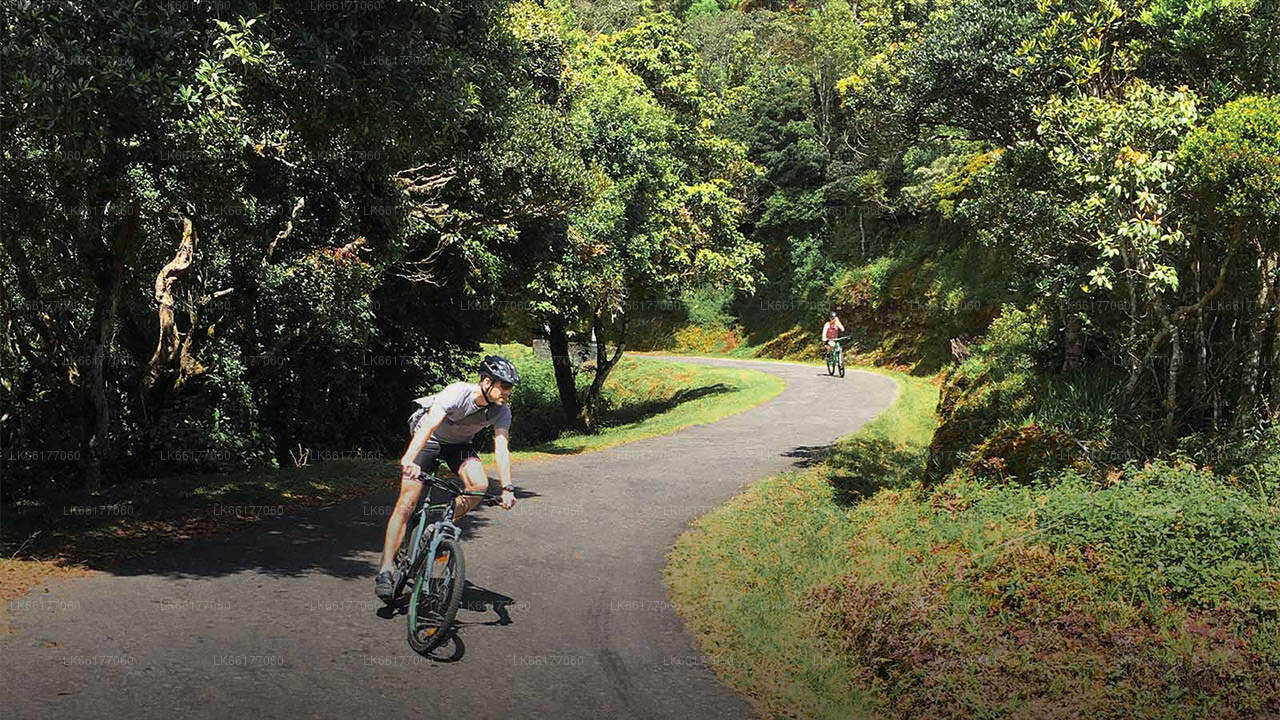
අනුරාධපුර නගරය
අනුරාධපුරය ශ්රී ලංකාවේ උතුරු මැද පළාතට අයත් වේ. අනුරාධපුරය යනු ශ්රී ලංකාවේ පුරාණ අගනගරවලින් එකක් වන අතර එය පුරාණ ලාංකීය ශිෂ්ටාචාරයේ හොඳින් සංරක්ෂණය කර ඇති නටබුන් සඳහා ප්රසිද්ධය. වර්තමානයේ යුනෙස්කෝ ලෝක උරුම අඩවියක් වන මෙම නගරය ශ්රී ලංකාවේ වත්මන් අගනුවර වන කොළඹ සිට කිලෝමීටර් 205 ක් උතුරින් පිහිටා ඇත.
Nuwara Wewa



Nuwara Wewa is an ancient reservoir located in Anuradhapura, in Sri Lanka’s North Central Province. Built around the 1st century BC by King Vattagamini (Valagamba), it is the largest tank (man-made lake) within the city. The reservoir lies on the eastern side of Anuradhapura and has formed a key part of the city’s historic layout.
The water body covers approximately 12 square kilometers and is supported by a bund (embankment) which controls its water level and flow. The surroundings include ancient ruins, shrines, and green embankments planted with trees. The ecosystem around the lake supports various bird species (including migratory birds), aquatic flora, and some small wildlife that rely on the wetland edges.
Visitors to Nuwara Wewa often enjoy walking or cycling along the bund, watching sunrise or sunset reflected in the calm waters, birdwatching, and photography. The reservoir also offers serene spots for relaxation and contemplation away from the busier parts of Anuradhapura. Being near several significant archaeological sites, it is often included in cultural and historic tours.
Nuwara Wewa is accessible throughout the year, though the period following the monsoon seasons yields fuller water levels and greener surroundings. Dry seasons reduce the inflow and may lower water level, altering the scenery somewhat. The site is easily reached by road from the center of Anuradhapura, with walking paths and small roads leading to its embankments. Best visiting times are early morning or late afternoon when temperatures are moderate and light is optimal.
අනුරාධපුර දිස්ත්රික්කය ගැන
අනුරාධපුරය ශ්රී ලංකාවේ උතුරු මැද පළාතට අයත් වේ. අනුරාධපුරය යනු ශ්රී ලංකාවේ පුරාණ අගනගරයන්ගෙන් එකක් වන අතර එය පුරාණ ලාංකීය ශිෂ්ටාචාරයේ හොඳින් සංරක්ෂණය කර ඇති නටබුන් සඳහා ප්රසිද්ධය. දැන් යුනෙස්කෝ ලෝක උරුම අඩවියක් වන මෙම නගරය, ශ්රී ලංකාවේ වත්මන් අගනුවර වන කොළඹ සිට කිලෝමීටර් 205 ක් උතුරින් පිහිටා ඇත. අනුරාධපුර පූජනීය නගරයේ සහ ඒ අවට නටබුන් විශාල සංඛ්යාවක් ඇත. නටබුන් ගොඩනැගිලි කාණ්ඩ තුනකින්, දාගැබ්, ආරාම ගොඩනැගිලි සහ පොකුණු (පොකුණු) වලින් සමන්විත වේ. නගරයේ පුරාණ ලෝකයේ වඩාත්ම සංකීර්ණ වාරිමාර්ග පද්ධති කිහිපයක් තිබූ අතර එය රටේ වියළි කලාපයේ පිහිටා ඇත. පරිපාලනය භූමියට ජලය සැපයීම සඳහා බොහෝ වැව් ඉදි කළේය. බොහෝ සිවිල් වැසියන් සිංහල වන අතර දෙමළ සහ ශ්රී ලාංකික මුවර්ස් දිස්ත්රික්කයේ ජීවත් වෙති.
උතුරු මැද පළාත ගැන
රටේ විශාලතම පළාත වන උතුරු මැද පළාත රටේ මුළු භූමි ප්රමාණයෙන් 16% ක් ආවරණය කරයි. උතුරු මැද පළාත පොළොන්නරුව සහ අනුරාධපුර නමින් දිස්ත්රික්ක දෙකකින් සමන්විත වේ. අනුරාධපුරය ශ්රී ලංකාවේ විශාලතම දිස්ත්රික්කයයි. එහි භූමි ප්රමාණය කිලෝමීටර 7,128 කි. උතුරු මැද පළාත ආයෝජකයින්ට තම ව්යාපාර ආරම්භ කිරීමට බොහෝ විභවයන් ඇත, විශේෂයෙන් කෘෂිකර්මාන්තය, කෘෂිකාර්මික පාදක කර්මාන්ත සහ පශු සම්පත් අංශ. උතුරු මැද පළාතේ ජනතාවගෙන් 65% කට වඩා මූලික කෘෂිකර්මාන්තය සහ කෘෂිකාර්මික පාදක කර්මාන්ත මත යැපේ. පළාතේ මධ්යම හා මහා පරිමාණ වැව් 3,000 කට වඩා පිහිටා ඇති බැවින් උතුරු මැද පළාත "වේව් බැඳි රජ්ජේ" ලෙසද හැඳින්වේ. ශ්රී මහා බෝධිය, රුවන්වැලි සෑය, ථූපාරාම දාගැබ, අභයගිරි ආරාමය, පොළොන්නරුව රන්කොට් වෙහෙර, ලංකාතිලක බියට පත්ව සිටිති.














